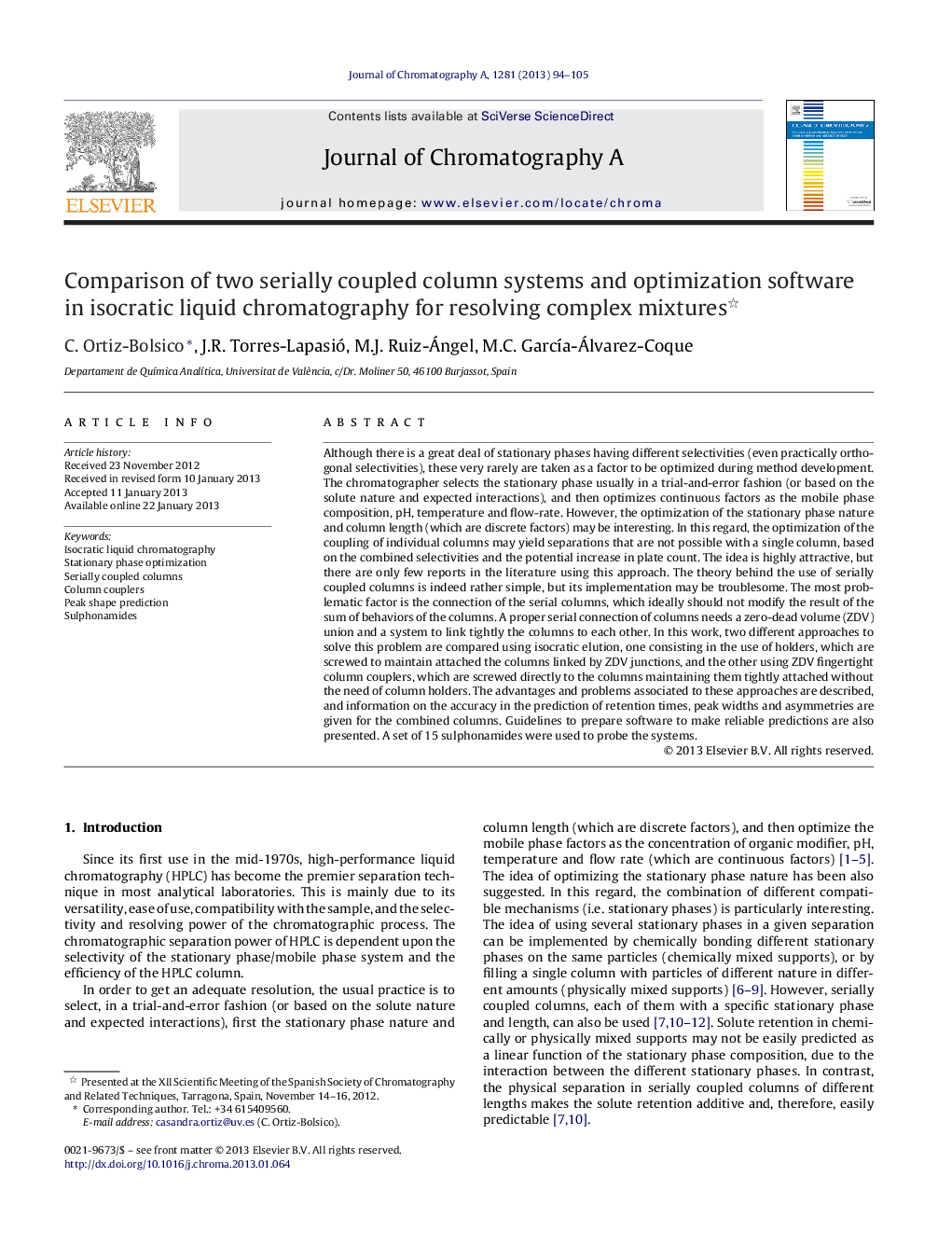| کد مقاله | کد نشریه | سال انتشار | مقاله انگلیسی | نسخه تمام متن |
|---|---|---|---|---|
| 1204540 | 1493645 | 2013 | 12 صفحه PDF | دانلود رایگان |

Although there is a great deal of stationary phases having different selectivities (even practically orthogonal selectivities), these very rarely are taken as a factor to be optimized during method development. The chromatographer selects the stationary phase usually in a trial-and-error fashion (or based on the solute nature and expected interactions), and then optimizes continuous factors as the mobile phase composition, pH, temperature and flow-rate. However, the optimization of the stationary phase nature and column length (which are discrete factors) may be interesting. In this regard, the optimization of the coupling of individual columns may yield separations that are not possible with a single column, based on the combined selectivities and the potential increase in plate count. The idea is highly attractive, but there are only few reports in the literature using this approach. The theory behind the use of serially coupled columns is indeed rather simple, but its implementation may be troublesome. The most problematic factor is the connection of the serial columns, which ideally should not modify the result of the sum of behaviors of the columns. A proper serial connection of columns needs a zero-dead volume (ZDV) union and a system to link tightly the columns to each other. In this work, two different approaches to solve this problem are compared using isocratic elution, one consisting in the use of holders, which are screwed to maintain attached the columns linked by ZDV junctions, and the other using ZDV fingertight column couplers, which are screwed directly to the columns maintaining them tightly attached without the need of column holders. The advantages and problems associated to these approaches are described, and information on the accuracy in the prediction of retention times, peak widths and asymmetries are given for the combined columns. Guidelines to prepare software to make reliable predictions are also presented. A set of 15 sulphonamides were used to probe the systems.
► Comparison of two approaches for serially coupling columns.
► Advantages and drawbacks of the column coupling systems.
► Discussion on the factors that improve the reliability of the predictions.
► Guidelines to develop software accounting peak retention and shape.
► Isocratic optimization of the separation of a set of 15 sulphonamides.
Journal: Journal of Chromatography A - Volume 1281, 15 March 2013, Pages 94–105